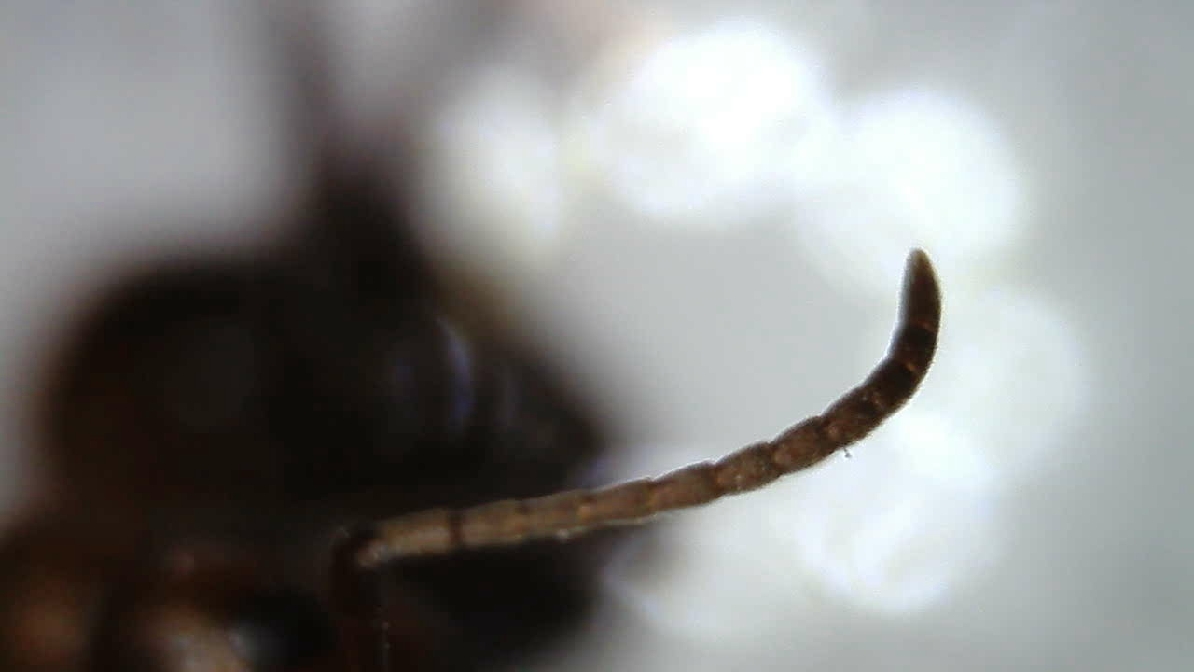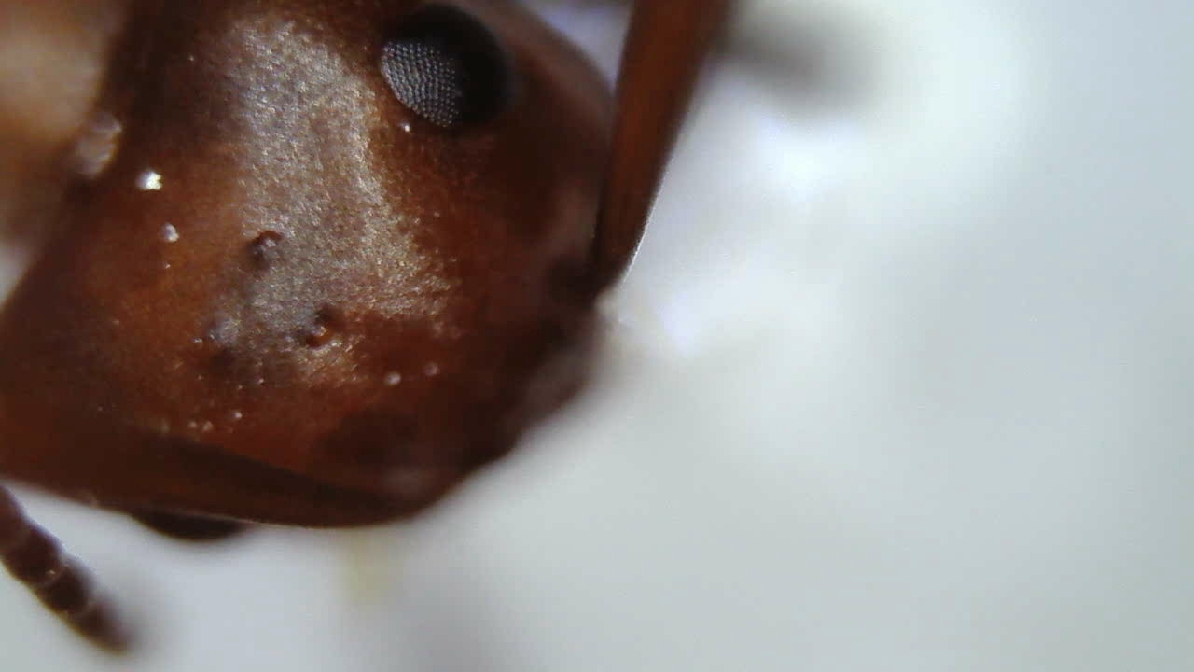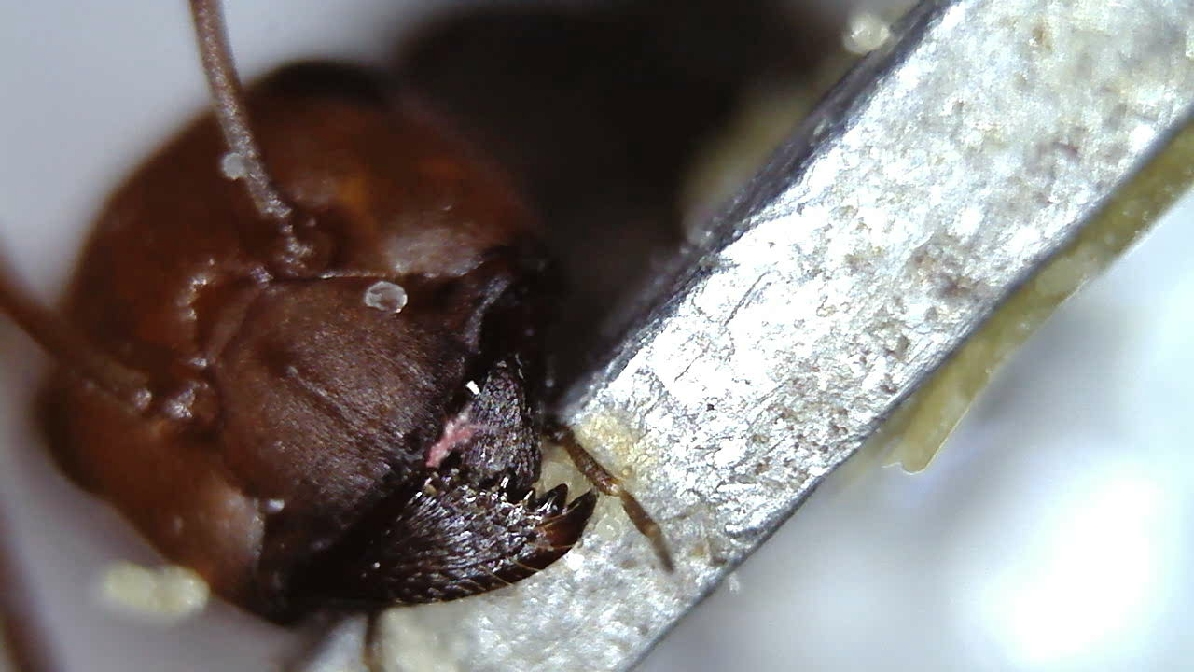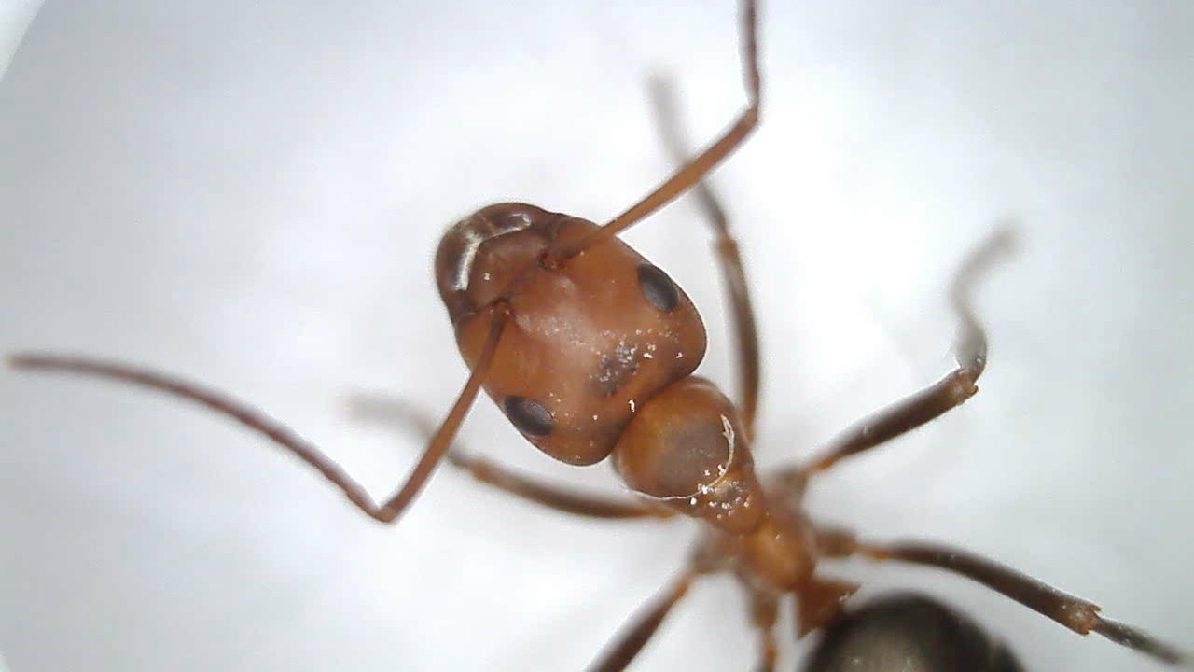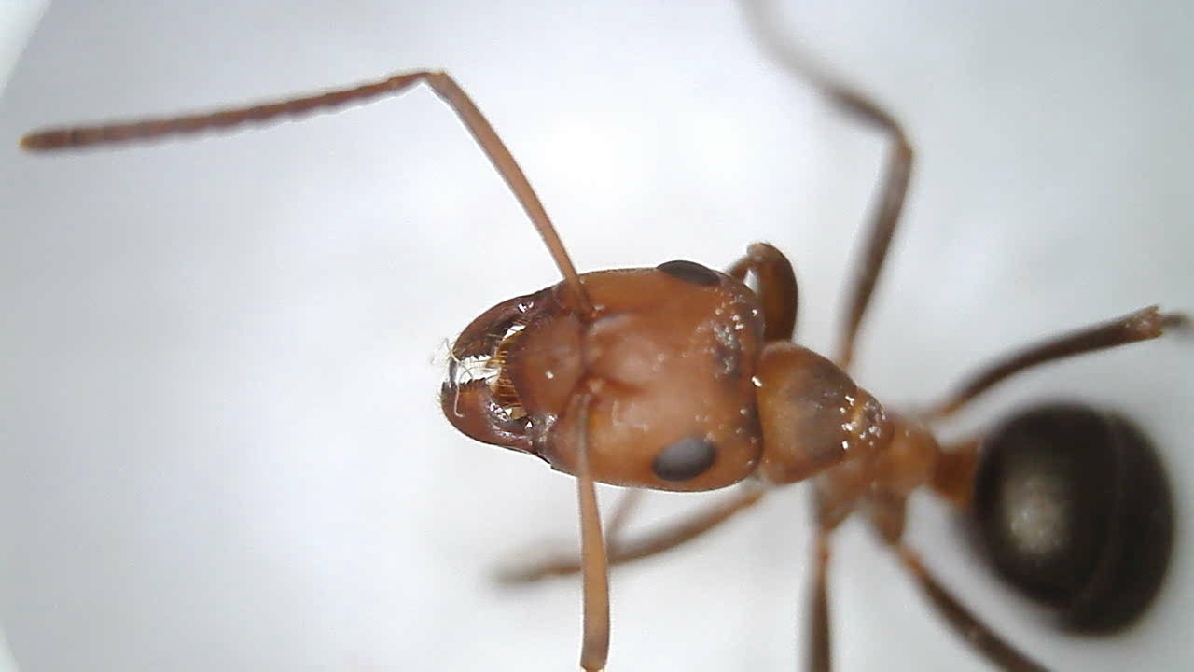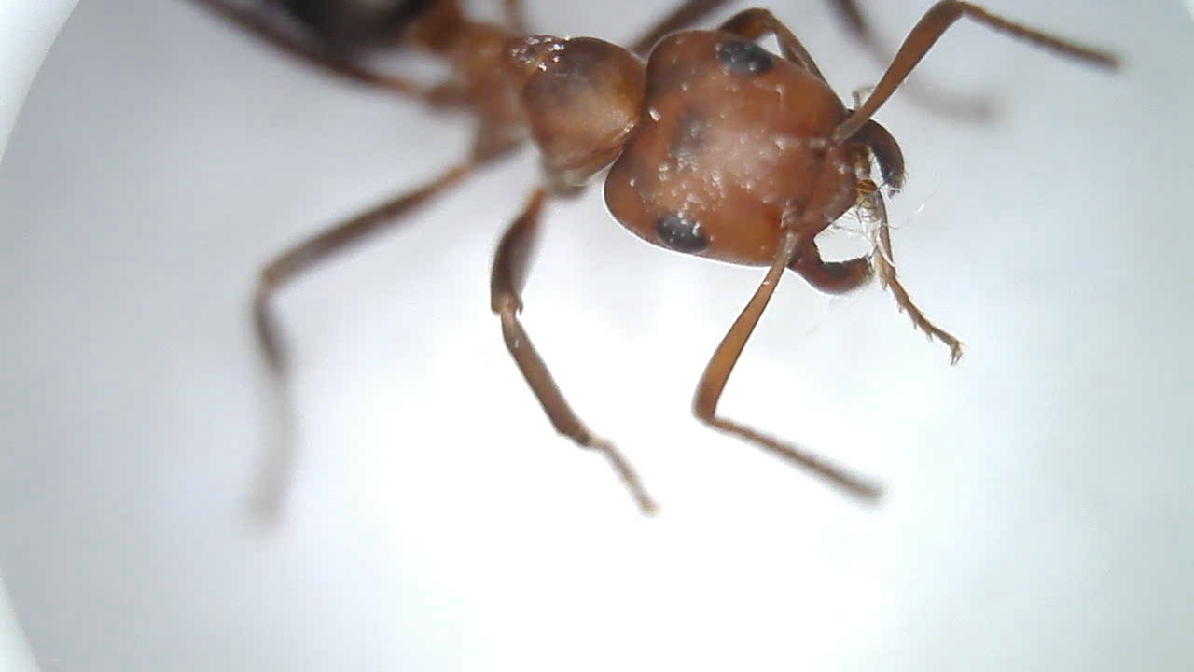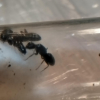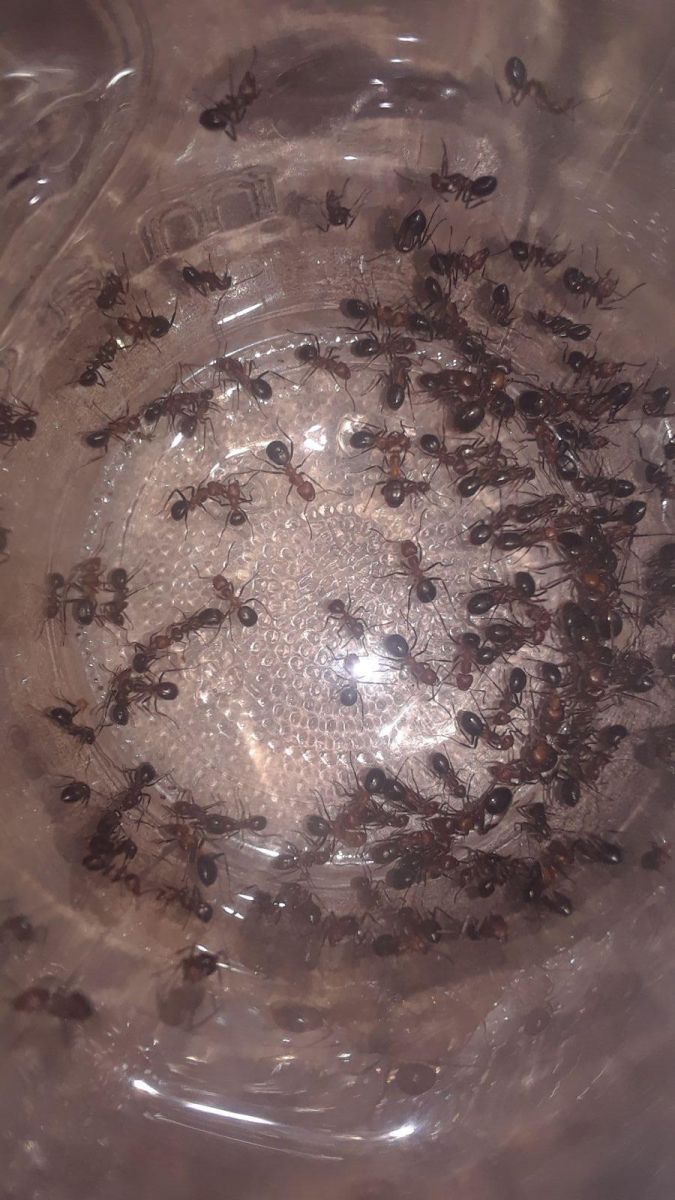Location: Michigan - Northeastern Lower Penninsula
Habitat: Jack Pine forest with a few oaks and white pines. Mostly dry, almost sandy soil.
Color: Red head and thorax. Black gaster.
Size: 6mm-7mm
Distinguishing Characteristics: Came from a large mound, 2'-2.5' high and at least 6' in diameter at its base. Very aggressive and fast. I counted 11 antenna segments. Every mound I inspected held the same species of ant. There didn't appear to be any sign of slave or host workers, although it can't be entirely ruled out.
